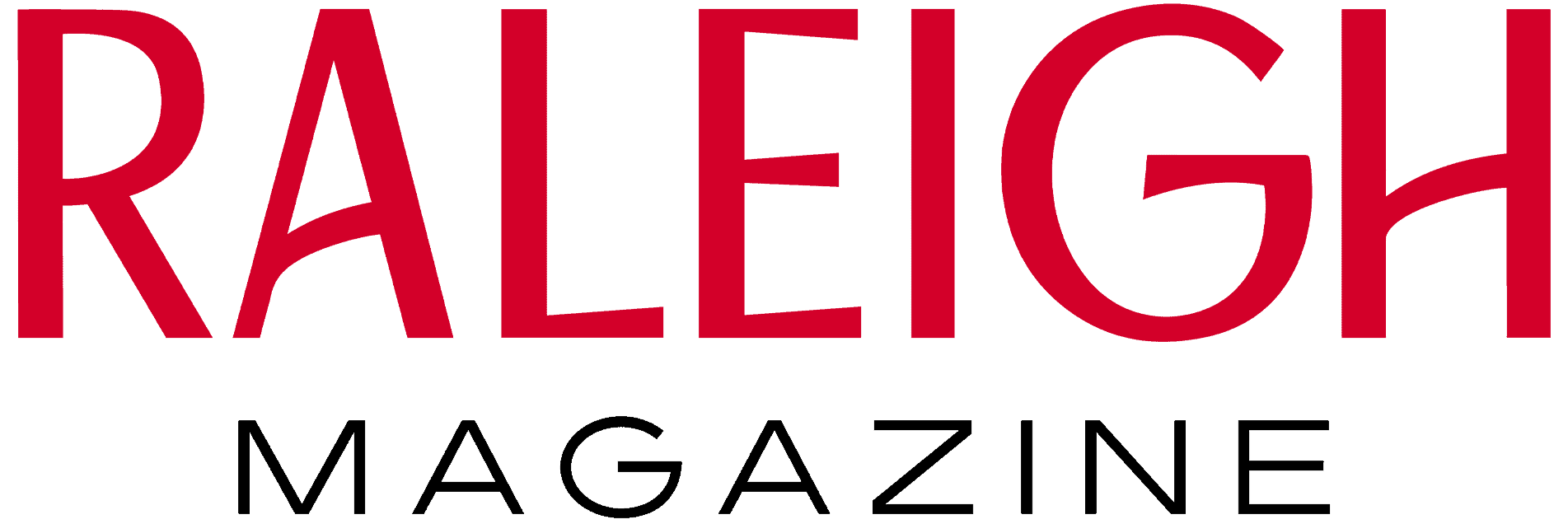Share this Post
Ink. There’s something sacred about ink…
Whether we put it down on paper or sketch it onto our bodies, there’s no other practical medium that we rely on quite as much to express ourselves, to tell our stories, to commemorate the most important events and to celebrate the most important people in our lives.
Much has been made in recent times about the future of ink in the publishing industry. Electronic books were supposed to replace our trusty paperbacks and old-fashioned hardcovers, but instead, Kindles and other devices have served mainly to get people excited about reading again.
Likewise, every day it seems we hear about print newspapers dying. While there’s certainly truth to the notion that print journalism is experiencing a decline, are we yet at the point where we collectively trust digital news sources, including TV, radio and the Internet, so entirely as to let our print papers of record fall by the wayside? We take a deep dive into the state of Raleigh’s venerable print daily, The News and Observer, and find that it’s not quite at death’s door.
One ink trend that’s not likely to fall out of favor any time soon is that of body art. Tattoos are more popular than ever, and while your hand or neck tat might not quite clinch you that job as a teller at your local bank, doctors, lawyers, chefs and CEOs will all attest that their tattoos haven’t held them back in the workplace. With nearly 40 percent of Millennials sporting permanent body art, tattoos are the mainstays of bikers and bohemians no longer. We speak to some well-known Raleighites about the meanings behind theirs.
At its core, ink has always been a tool for the creation of art in so many different forms. Another art that’s been all but lost to the digital age is the art of letter writing; when was the last time you put pen to paper with the purpose of catching up with a friend?
But as surely as the nostalgia for fountain pens, ink stamps and typewriters still exists, there are still those who concern themselves with beautiful handwriting. In Raleigh, you can find talented calligraphers who’ll personalize something meaningful for you— a wedding invitation or a birth certificate, say—if you treasure that whimsical touch.
As a medium, ink is ancient with origins dating back to the earliest humans in prehistoric times. Follow us through these pages as we explore, in the modern day, how we use ink and what it’s come to mean to us.
Despite sweeping changes and brink-of-death rumors, Raleigh’s daily print newspaper is still going strong
Raleigh’s storied News & Observer has seen its share of changes recently.
In 2017, several reporters and columnists departed and the paper made announcements around adjusted government, sports and arts-related coverage. Beginning this year, the twice-weekly distribution of free print editions of its ten community newspapers ceased, giving way to another free publication, Triangle Today. To top it off, daily and Sunday circulation numbers have declined steadily—by between 7 and 15 thousand subscribers per year— since 2013, according to parent company McClatchy’s annual reports.
Most of these changes are part of McClatchy’s “newsroom reinvention initiative,” focused on digital best practices and the online performance of stories from individual reporters. Reporters now work from a checklist to vet, from an audience and mission perspective, the worthiness of every story they wish to pursue.
Readers, however, have criticized the N&O for what they see as scaled-back news and arts reporting in favor of traffic-driving lifestyle, food and entertainment-focused coverage. Some have speculated that, with McClatchy’s seemingly precarious financial position—it has a large debt and reported a net loss $238.9 million in the third quarter of 2017, with an adjusted loss of $5.9 million—the N&O’s print edition is on its last legs. (Fourth quarter numbers weren’t available before press time). Rumors have swirled of more newsroom layoffs and the paper reducing print to six days a week.
But are things really so bad? Other changes seem more promising.
Last winter, McClatchy bought the Durham Herald-Sun. Last month, the paper announced that newspaper industry veteran Robyn Tomlin will take over as executive editor, with an expanded role overseeing McClatchy’s seven other regional newspapers. Total unique visitors to its website increased by nearly 2 million between 2015 and 2016 and, after closing a $22 million real estate deal, the N&O’s staff will move from its circa-1950s headquarters on McDowell Street into a modern space in a downtown high-rise this spring.
N&O publisher Sara Glines assures that all the changes aren’t in preparation for the day print newspapers die.
“There’s still a lot of activity around print,” she says. “As long as there are readers who want to find us in print, and as long as there are advertisers who want to put their message into print, there will be print.”
The modern reality of fewer print newspapers, half as many newsroom jobs since the millennium and the threat of significantly diminished local newspapers (ghost newspapers) have threatened communities with long-term and indisputably negative political, social and economic consequences. People need information on political candidates and elections, government processes, public health threats, scandals, government waste; the permanence, pertinence and accessibility of ink has made newspapers an essential part of our democracy.
Traditionally, local newspapers have set the agenda for public debate with the stories and issues they choose to shed light on, as well as with continued coverage they give stories and in the editorial stances they take. But according to a 2016 report from researchers at UNC-Chapel Hill’s School of Media and Journalism, modern newspaper owners—a “new media baron”—have contributed to the rise of both ghost newspapers as well as large swathes of the country without any newspapers at all, known as news deserts.
New media barons, including private equity and hedge funds and other investor partnerships, have bought, and now manage, local newspapers all over the country. They mostly “lack journalism experience or the sense of civic mission traditionally embraced by publishers and editors,” the report, entitled “The Rise of a New Media Baron and the Emerging Threat of News Deserts,” states. Instead, they use digital strategies to entice readers to “click.”
“In chasing ‘clicks’ and ‘audiences’ to appeal to local advertisers, their cookie-cutter newspaper websites and social media postings supply pithy and entertaining features for ‘sharing,’ ‘listicles’ and the sort of videos ubiquitous on the internet,” the report notes.
In other words, the primary function is to make money for investors, which means less public service journalism and boots-on-the-ground reporting and more fluff. And if the newspaper isn’t profitable, an owner might drop it altogether.
“If the local newspaper fails, no other medium, such as television or radio, is capable of providing these communities with the sort of public service journalism that lays out the issues and holds public servants accountable,” the UNC report asserts.
The publishing company McClatchy, which bought the N&O in 1995 and the Charlotte Observer in 2006, owns 30
newspapers in total and is publicly traded. Its business model of acquiring regional daily and weekly papers to pool resources and increase its news footprint is a common newspaper industry strategy. The Charlotte Observer and the N&O, as the fifth and sixth most successful papers in the McClatchy chain respectively (in terms of circulation numbers and total unique visitors in 2016) are both profitable.
But unlike the “new media barons,” legacy owner McClatchy is what the UNC report describes as “more civic-minded and invested in aggressive and costly public service journalism.” To this point, Glines reaffirms the N&O’s commitment to its long-established agenda-setting role, as well as to publishing what readers actually want to read.
When Tomlin begins this month, Glines says she anticipates “determining some pillars” of editorial priorities for the paper. She also expects that the N&O’s Opinions and Solutions section will focus on re-educating the paper’s readership on the divide between news and opinion pages, engaging with the priorities of the community, and bringing more, diverse people to the table to have conversations and find solutions to local problems.
“And we’ll never back down on our watchdog role,” Glines says. “We’re still dedicated to investigative reporting, to holding those in public service accountable. That’s at the core of what journalism is about.”
So what about readers’ valid concerns about losing the hyper-local government and neighborhoods coverage that the community newspapers, at their peak, provided to residents of Raleigh’s suburbs and exurbs? Will the move create news deserts in places like Clayton, Garner and Johnston County? Glines is blunt: people weren’t reading them.
“That hyper, hyper-local, very niche content, probably we don’t have,” Glines says. She points to neighborhood tech sites such as Next Door and other social media. “That content exists, it’s just not ours to cover right now. Readers aren’t looking for that in a newspaper today.”
That doesn’t mean the N&O isn’t closely watching the communities around Raleigh formerly under its community newspapers’ umbrella and reporting on impactful events, Glines says. The goal is to put news events that affect and change individual communities into the greater regional context for readers. Growth is happening all over the Triangle and its outer limits and how that growth changes communities physically, culturally, and in terms of innovation, will be far-reaching.
It’s the same for arts and sports coverage; people no longer read next-day reviews and game recaps, but the paper still covers the arts and sports in what, Glines says, “may actually be deeper, richer, more meaningful ways.” This is where digital—with its various capabilities, including video, audio, graphic design and breaking news on social media, not to mention unlimited space—plays a significant role, not as a replacement for print, but as a companion to it.
“The beauty of digital is, you’re not constrained by space, you’re not constrained by newsprint and distribution cost,” says Scott Manuel, the Raleigh-based vice president of digital technology and product for McClatchy. “The economics of being able to provide as much journalism as we create is just so much more bountiful in the digital space.”
Glines and Manuel say that, though much of the N&O’s coverage may be online-only going forward, they don’t foresee a time in the near future when it will cease to exist as a print newspaper entirely (nor is it going to print only six days a week).
“In this über-connected world when you’re staring at this device all the time, sometimes it’s nice to take a break, a respite from digital devices,” says Manuel.
“Everyone I talk to wants to sit down with a cup of coffee on the weekend and go through the Sunday paper,” Glines agrees. “I get that, because I do, too.”
So while recent reports of the death of the News and Observer’s print edition may have been greatly exaggerated, Glines acknowledges that, ultimately, readers will determine the fate of print newspapers.
“We’re followers, not leaders,” she says. “Though we still have a very engaged audience with print, we also know that the part of our readership that’s growing is not print, it’s digital. We have to continue to evolve.”
All told, it seems that Raleigh should count itself lucky. It has a reputable, profitable newspaper that’s actively preparing for changes in the news media landscape in the future. And, unlike a growing number of areas in the U.S., its daily, on both print and digital platforms, is still unwaveringly committed to bringing strong journalism to its readers.
See part two of our Ink feature, Skin Deep.
Share this Post







